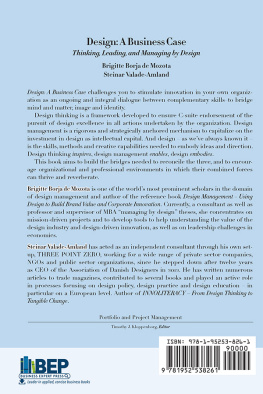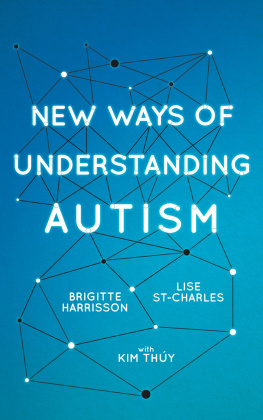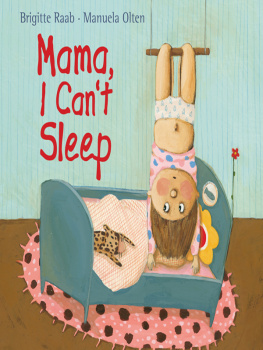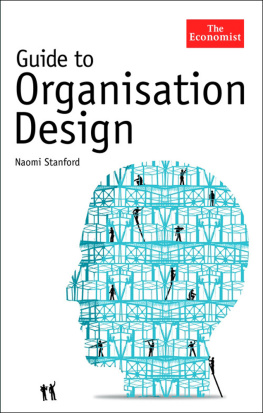Brigitte Borja de Mozota - Design: A Business Case
Here you can read online Brigitte Borja de Mozota - Design: A Business Case full text of the book (entire story) in english for free. Download pdf and epub, get meaning, cover and reviews about this ebook. year: 2020, publisher: Business Expert Press, genre: Business. Description of the work, (preface) as well as reviews are available. Best literature library LitArk.com created for fans of good reading and offers a wide selection of genres:
Romance novel
Science fiction
Adventure
Detective
Science
History
Home and family
Prose
Art
Politics
Computer
Non-fiction
Religion
Business
Children
Humor
Choose a favorite category and find really read worthwhile books. Enjoy immersion in the world of imagination, feel the emotions of the characters or learn something new for yourself, make an fascinating discovery.
- Book:Design: A Business Case
- Author:
- Publisher:Business Expert Press
- Genre:
- Year:2020
- Rating:5 / 5
- Favourites:Add to favourites
- Your mark:
- 100
- 1
- 2
- 3
- 4
- 5
Design: A Business Case: summary, description and annotation
We offer to read an annotation, description, summary or preface (depends on what the author of the book "Design: A Business Case" wrote himself). If you haven't found the necessary information about the book — write in the comments, we will try to find it.
Design: A Business Case — read online for free the complete book (whole text) full work
Below is the text of the book, divided by pages. System saving the place of the last page read, allows you to conveniently read the book "Design: A Business Case" online for free, without having to search again every time where you left off. Put a bookmark, and you can go to the page where you finished reading at any time.
Font size:
Interval:
Bookmark:

Design: A Business Case
Design: A Business Case
Thinking, Leading, and Managing by Design
Brigitte Borja de Mozota
Steinar Valade-Amland
Illustrations: Morten U. Petersen, Reflekt Design, Copenhagen

Design: A Business Case: Thinking, Leading, and Managing by Design
Copyright Business Expert Press, LLC, 2020.
All rights reserved. No part of this publication may be reproduced, stored in a retrieval system, or transmitted in any form or by any meanselectronic, mechanical, photocopy, recording, or any other except for brief quotations, not to exceed 250 words, without the prior permission of the publisher.
First published in 2020 by
Business Expert Press, LLC
222 East 46th Street, New York, NY 10017
www.businessexpertpress.com
ISBN-13: 978-1-95253-826-1 (paperback)
ISBN-13: 978-1-95253-827-8 (e-book)
Business Expert Press Portfolio and Project Management Collection
Collection ISSN: 2156-8189 (print)
Collection ISSN: 2156-8200 (electronic)
Cover and interior design by S4Carlisle Publishing Services Private Ltd., Chennai, India
First edition: 2020
10 9 8 7 6 5 4 3 2 1
Printed in the United States of America.
Abstract
This book argues the business case for design excellence in organization whether your mission is to develop new products, services, or procedures or to change existing ones into something better. Although design thinking has reigned for some years now, design management has been left in the shadows. However, design thinking without design making skillfully integrated and properly managed easily becomes hollow and meaningless. Design excellence requires knowledge, as well as end-to-end management, of the resources and the creative energy that go into development and change processes. Design thinking made up of the acknowledgment of design skills, of methodological choices, the right mindset, and a conducive culture is dynamic and adaptable to the project itself and the people involved. Design thinking is a framework developed to ensure C-suite endorsement, strategic coherence, stakeholder engagement, and design excellence in all actions undertaken by the organization. Design management is a rigorous and strategically anchored mechanism to capitalize on the investment in design as intellectual capital. And design as weve always known it is the skills and methods and creative capabilities needed to embody ideas and direction. Design thinking inspires, design management enables, design embodies. Only when the three play together as a team, the result is design excellence. Design: A Business Case challenges you to stimulate innovation in your own organization, to make design a dialogue between complementary skills, to see design as a bridge between mind and matter, image and identity.
Keywords
design; design management; design thinking; business thinking; organizational design; management; leadership; excellence; design leadership
Contents
When I was admitted into The Royal Danish Academy of Fine Arts Schools of Architecture, Design and Conservation in 2008, one of my main areas of study and interest was web design and multimedia design. Fast-forward a little over a decade and these fields of design have disappeared and developed into a much richer, sophisticated world of User Experience Design, where designers today may identify themselves as interaction designers, visual designers, information architects, UX strategists, etc. Looking back even further, beyond my own career in design, youll find a fascinating evolution of the craft of designing objects and buildings into a practice with a plethora of specializations going well beyond our initial definitions of the profession. Design is no longer necessarily manifested by a physical artefact but can be a process, a way of thinking, speculation, or a critical comment. This evolution has started positioning design not only as a craft, but also as a general approach to problem solving, valuable for not only design practitioners, but any individual navigating todays complexity. This has democratized the value of design but has also started a valuable discourse on what aspects of designing can truly be owned and attributed to designers. However, it has also created confusion about what designers are and what they do.
One might ask, if everything is design, then what is a designer? As a practitioner myself, this is a question Im asked a lot and from time to time, admittedly, ask myself.
New approaches to design coexist with traditional ones. Rather than focusing on the latest trends in design, this book attempts to provide a useful lay of the land while bridging it with similar and complementary concepts in business, strategy, and management. As designs impact expands, the need for contextualizing it with other disciplines increases. This highlights not only how some of the core concepts of design do not exist in a silo, but equips anybody with a design mindset with the vocabulary to bridge their activities and thinking into other disciplines, breaking down barriers and enabling innovation and collaboration across the board. The book provides a comprehensive overview of designs evolution from a differentiator to a transformator to what to many companies today is an integral part of their business and a contributor to good business.
I first became acquainted with the work of Steinar Valade-Amland when he served as the CEO of Danish Designers in 2010. During this time, the Danish School of Design was undergoing its transition to university status while merging with The Royal Danish Academy of Fine Arts, which led us to a number of discussions on the future of the design profession, and, in particular, design education. The authors of this book, Brigitte Borja de Mozota and Steinar Valade-Amland, combine their unique perspectives from consulting, academia, and industry to provide a much needed overview and state of the art of design.
This book serves as a good refresher for any design professional but also as a great introduction for anybody with a design curiosity about the past, present, and also future of design in the face of new global challenges.
Philip Battin
Head of Seed Studio at Google
Introduction
Design: A Business Case challenges you to stimulate innovation in your own organization, to make design a dialogue between complementary skills, to see design as a bridge between mind and matter, image and identity.
How a Global Crisis Released a Wealth of Tacit Design Thinking
Although conscious of the need to tread carefully, not to be accused of profiteering on the crisis that the world found itself in earlier this year, and for which we will all have to change our outlook for the near and distant future, we cannot but share a few observations weve made in the last six months. One of the most encouraging was how agile and adaptable thousands of companies around the world proved in response to the situation. The COVID-19 crisis has evidenced how design activity flourishes on at least three different levels when extreme disruption of business as usual, external constraints, and sudden, dire needs drive innovation.
Influencing outputs. Coming from high-tech as well as traditional manufacturing industries, companies multinationals and SMEs alike, as well as individual professionals from design and engineering, business and the arts took on the challenge of addressing and giving tangible answers to a series of unarticulated yet universally understood briefs. They developed new products, new production lines, new assembly methods even new materials to serve a global market in need of protective gear, respiratory products, and other items of which the world experienced a sudden and life-threatening shortage but, clearly, also to survive a situation where traditional markets collapsed and supply chain vanished. Such adaptiveness and agility have never been seen before, and it only proves what an untapped potential for design thinking and design actually exists out there.
Font size:
Interval:
Bookmark:
Similar books «Design: A Business Case»
Look at similar books to Design: A Business Case. We have selected literature similar in name and meaning in the hope of providing readers with more options to find new, interesting, not yet read works.
Discussion, reviews of the book Design: A Business Case and just readers' own opinions. Leave your comments, write what you think about the work, its meaning or the main characters. Specify what exactly you liked and what you didn't like, and why you think so.











